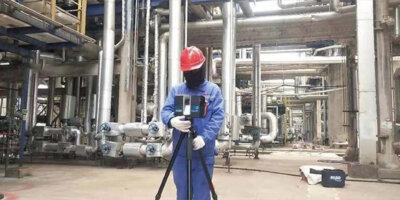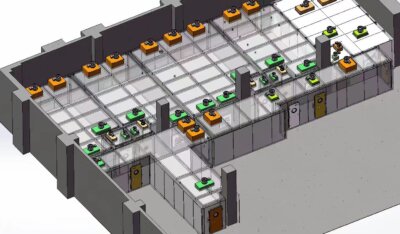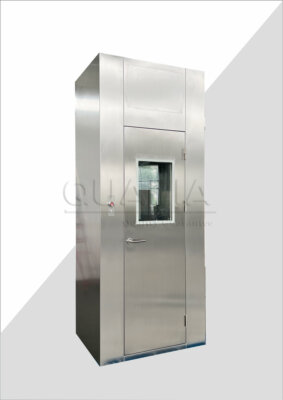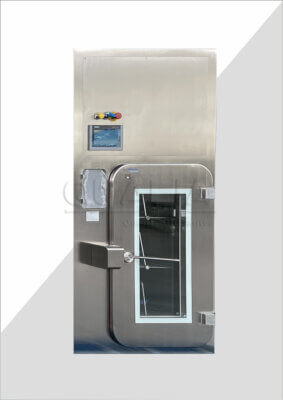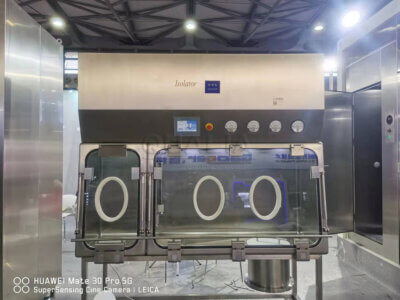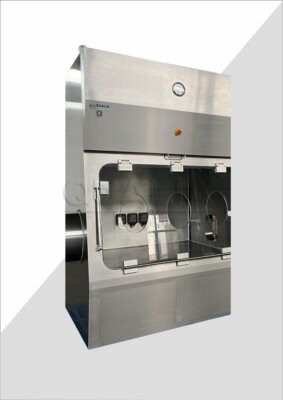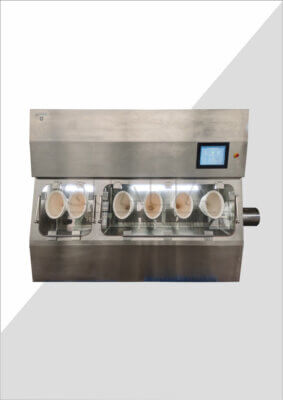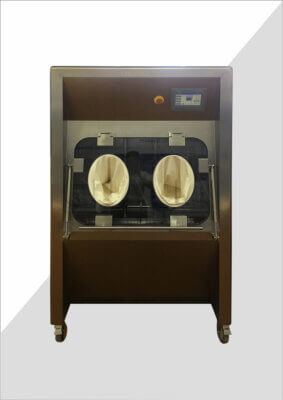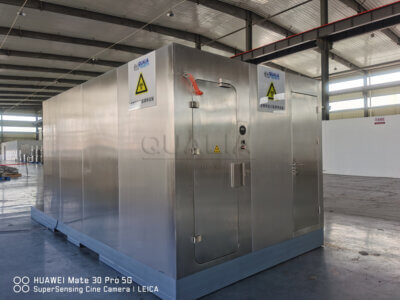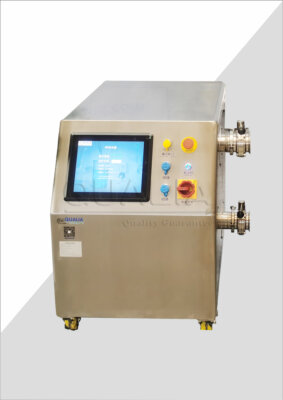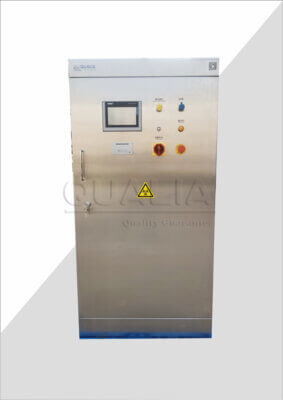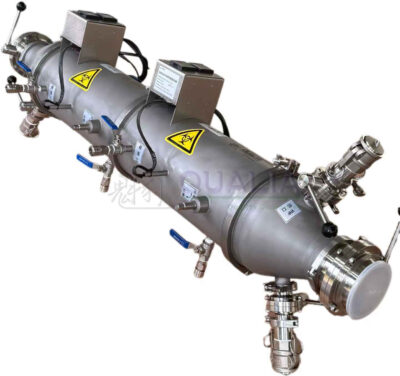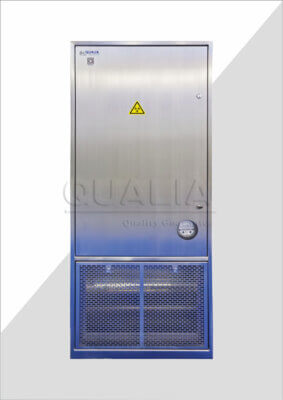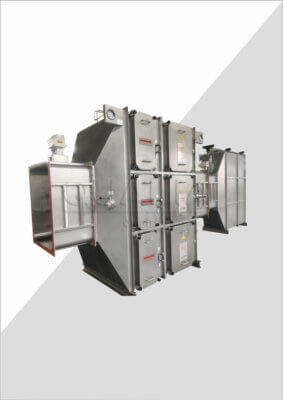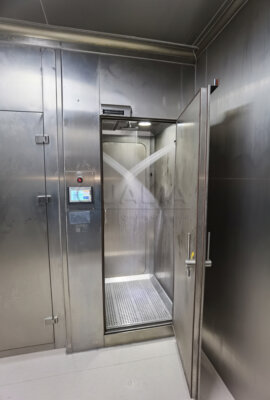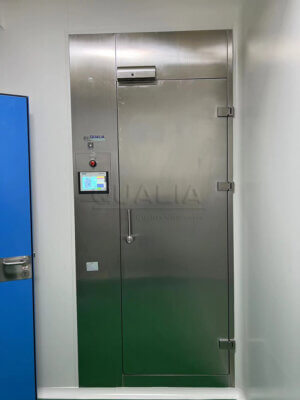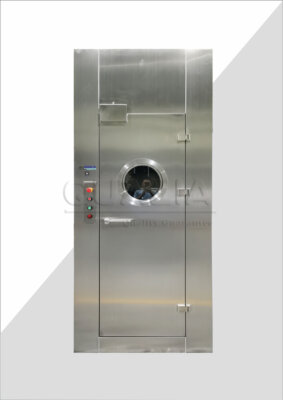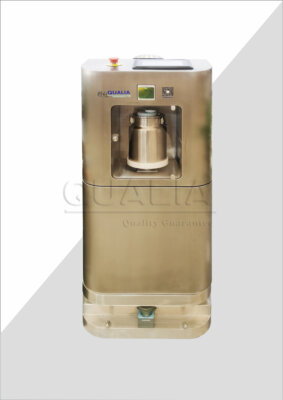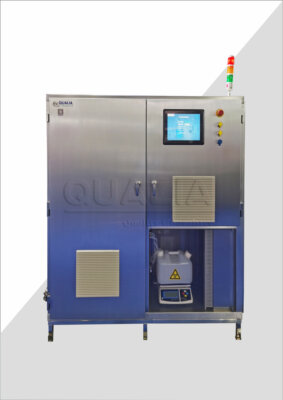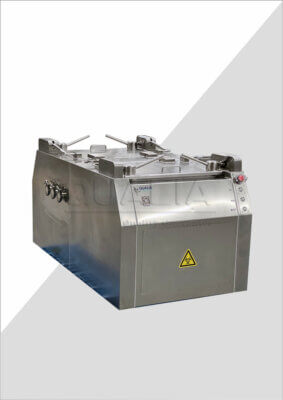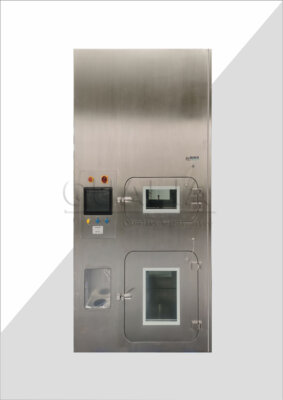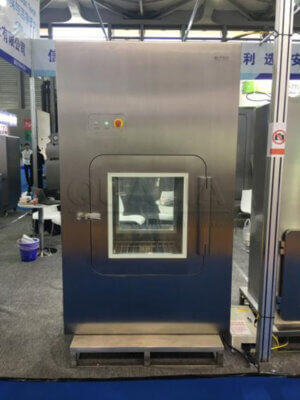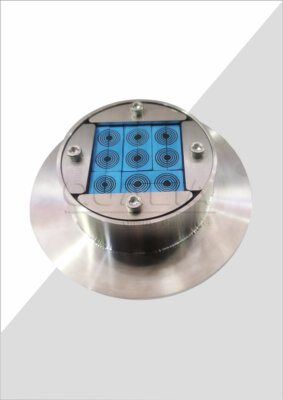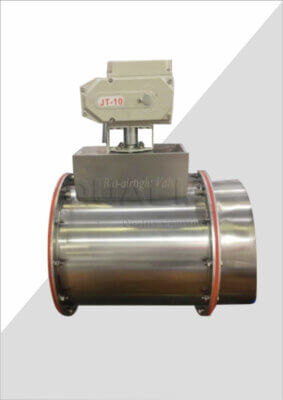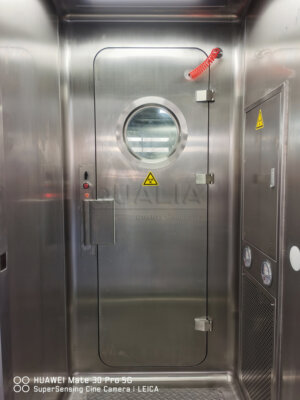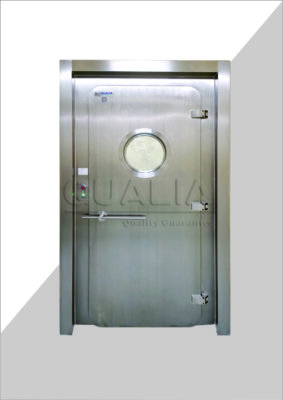The world of mobile biosafety laboratories has seen remarkable advancements in recent years, with energy efficiency becoming a crucial focus for researchers and manufacturers alike. As the demand for portable, high-containment facilities grows, so does the need for innovative solutions to reduce energy consumption without compromising safety or functionality. This article delves into the cutting-edge strategies and technologies employed in mobile BSL-3 and BSL-4 module laboratories to maximize energy efficiency while maintaining strict biosafety standards.
From advanced HVAC systems to smart lighting solutions, mobile biosafety laboratories are embracing a range of energy-saving measures. These innovations not only reduce operational costs but also minimize the environmental impact of these critical research facilities. As we explore the latest developments in this field, we'll uncover how manufacturers like QUALIA are leading the charge in creating sustainable, high-performance mobile laboratories.
As we transition into the main content of this article, it's important to note that energy efficiency in mobile BSL-3 and BSL-4 laboratories is not just about cutting costs. It's about creating sustainable research environments that can operate effectively in various locations and conditions. The advancements we'll discuss represent a significant leap forward in the design and operation of these essential facilities.
Energy efficiency in mobile BSL-3 and BSL-4 module laboratories is achieved through a combination of innovative design, advanced technologies, and operational best practices, resulting in reduced energy consumption without compromising safety or research capabilities.
To provide an overview of the key energy efficiency features in mobile BSL-3/BSL-4 module laboratories, let's examine the following table:
| Feature | Energy Efficiency Impact | Safety Considerations |
|---|---|---|
| HVAC System | High – Optimized air exchange rates | Maintains required air pressure differentials |
| LED Lighting | Medium – Reduced heat generation | Ensures adequate illumination for work |
| Equipment Selection | High – Energy-efficient models | Meets performance standards for research |
| Insulation | Medium – Improved thermal regulation | Supports containment integrity |
| Automated Controls | High – Optimizes energy use | Ensures consistent environmental conditions |
How are HVAC systems optimized for energy efficiency in mobile BSL-3/BSL-4 laboratories?
The heart of any biosafety laboratory is its HVAC system, and in mobile BSL-3/BSL-4 facilities, these systems are designed with both energy efficiency and safety in mind. The challenge lies in maintaining the required air exchange rates and pressure differentials while minimizing energy consumption.
Modern mobile laboratories utilize advanced HVAC technologies that incorporate variable frequency drives (VFDs) and smart sensors to adjust airflow based on real-time needs. This dynamic approach ensures that energy is not wasted on excessive air exchanges when the laboratory is not in active use.
One of the key innovations in HVAC optimization is the use of heat recovery systems. These systems capture and reuse the heat from exhaust air to pre-condition incoming air, significantly reducing the energy required for heating and cooling.
Advanced HVAC systems in mobile BSL-3/BSL-4 laboratories can reduce energy consumption by up to 30% compared to traditional fixed installations, while still maintaining the stringent air quality and pressure requirements essential for biosafety.
| HVAC Feature | Energy Savings (%) | Safety Impact |
|---|---|---|
| Variable Frequency Drives | 15-25% | High |
| Heat Recovery Systems | 20-30% | Moderate |
| Smart Sensors | 10-15% | High |
What role does lighting play in energy efficiency for mobile biosafety labs?
Lighting is a critical component of laboratory operations, but it can also be a significant source of energy consumption and heat generation. In mobile BSL-3/BSL-4 laboratories, innovative lighting solutions are being implemented to address these challenges.
LED lighting has become the standard in energy-efficient mobile laboratories. These fixtures not only consume less power but also generate less heat, reducing the load on the HVAC system. Additionally, smart lighting controls with occupancy sensors and daylight harvesting capabilities further optimize energy use.
The design of mobile laboratories also incorporates natural light where possible, without compromising containment. This approach not only reduces energy consumption but also creates a more pleasant working environment for researchers.
The implementation of LED lighting and smart controls in mobile BSL-3/BSL-4 laboratories can result in up to 75% reduction in lighting-related energy consumption compared to traditional fluorescent systems.
| Lighting Type | Energy Efficiency | Lifespan (hours) |
|---|---|---|
| LED | High | 50,000+ |
| Fluorescent | Moderate | 10,000-20,000 |
| Incandescent | Low | 1,000-2,000 |
How does equipment selection impact energy efficiency in mobile biosafety laboratories?
The selection of laboratory equipment plays a crucial role in the overall energy efficiency of mobile BSL-3/BSL-4 facilities. Manufacturers like QUALIA are leading the way in integrating energy-efficient equipment into their mobile laboratory designs.
Energy-efficient equipment not only consumes less power during operation but also generates less heat, reducing the cooling load on the HVAC system. This includes everything from ultra-low temperature freezers to biosafety cabinets and centrifuges.
Smart power management systems are also being incorporated into mobile laboratories. These systems can automatically power down non-essential equipment during periods of inactivity and manage peak load demands to optimize energy use.
By selecting energy-efficient equipment and implementing smart power management, mobile BSL-3/BSL-4 laboratories can reduce equipment-related energy consumption by up to 40% compared to facilities using standard laboratory equipment.
| Equipment Type | Energy Efficiency Rating | Annual Energy Savings (kWh) |
|---|---|---|
| Ultra-Low Temp Freezer | Energy Star | 5,000-8,000 |
| Biosafety Cabinet | Low Flow | 1,000-2,000 |
| Centrifuge | High Efficiency | 500-1,000 |
What insulation techniques are used to enhance energy efficiency in mobile biosafety labs?
Insulation is a critical factor in maintaining energy efficiency in mobile BSL-3/BSL-4 laboratories, especially given the varying environmental conditions these facilities may encounter. Advanced insulation materials and techniques are employed to minimize heat transfer and maintain stable internal temperatures.
High-performance insulation materials such as aerogels and vacuum insulated panels are being integrated into the walls, floors, and ceilings of mobile laboratories. These materials provide superior thermal resistance while maintaining a slim profile, crucial for mobile applications.
Additionally, innovative designs incorporate thermal breaks and air barriers to further reduce heat transfer and prevent condensation, which is essential for maintaining both energy efficiency and biosafety integrity.
The use of advanced insulation techniques in mobile BSL-3/BSL-4 laboratories can reduce heating and cooling energy requirements by up to 50% compared to standard construction methods, while also enhancing the facility's ability to maintain stable internal conditions in diverse environments.
| Insulation Type | R-Value per Inch | Thickness Required (inches) |
|---|---|---|
| Aerogel | 10-14 | 1-2 |
| Vacuum Insulated Panel | 25-40 | 0.5-1 |
| Polyurethane Foam | 6-7 | 3-4 |
How do automated control systems contribute to energy efficiency in mobile BSL-3/BSL-4 labs?
Automated control systems are at the forefront of energy efficiency efforts in mobile BSL-3/BSL-4 laboratories. These sophisticated systems integrate various components of the laboratory to optimize energy use while maintaining strict biosafety standards.
Building Management Systems (BMS) in mobile laboratories continuously monitor and adjust HVAC settings, lighting, and equipment operations based on occupancy, time of day, and external conditions. This real-time optimization ensures that energy is used only when and where it's needed.
Moreover, these systems provide detailed energy consumption data, allowing operators to identify areas for further efficiency improvements and track the effectiveness of energy-saving measures over time.
Automated control systems in mobile BSL-3/BSL-4 laboratories can reduce overall energy consumption by up to 30% through intelligent management of HVAC, lighting, and equipment operations, while also enhancing safety through constant monitoring of critical parameters.
| Control System Feature | Energy Savings Potential | Safety Impact |
|---|---|---|
| Occupancy-Based Control | 15-25% | Moderate |
| Time-of-Day Scheduling | 10-20% | Low |
| Predictive Maintenance | 5-10% | High |
What renewable energy options are viable for powering mobile BSL-3/BSL-4 laboratories?
As the push for sustainability in scientific research grows, manufacturers of mobile BSL-3/BSL-4 laboratories are exploring renewable energy options to power these facilities. While the high energy demands and critical nature of biosafety labs present challenges, innovative solutions are emerging.
Solar panels integrated into the roof or deployable arrays can supplement power needs, especially in remote locations. Advanced battery storage systems allow excess energy to be stored for use during peak demand periods or when solar generation is low.
Some mobile laboratories are also being designed with the capability to connect to local renewable energy sources when available, further reducing their carbon footprint.
While complete reliance on renewable energy is not yet feasible for most mobile BSL-3/BSL-4 laboratories due to their high power requirements, hybrid systems incorporating solar and battery storage can reduce grid electricity consumption by up to 30% in favorable conditions.
| Renewable Energy Source | Potential Energy Contribution | Implementation Challenges |
|---|---|---|
| Solar PV | 20-30% | Space and Weight Constraints |
| Battery Storage | 10-20% | Cost and Capacity Limitations |
| Local Renewable Grid | Variable | Availability and Compatibility |
How do energy recovery systems enhance efficiency in mobile biosafety laboratories?
Energy recovery systems are becoming increasingly sophisticated in mobile BSL-3/BSL-4 laboratories, playing a crucial role in reducing overall energy consumption. These systems focus on capturing and repurposing energy that would otherwise be wasted.
Heat recovery ventilators (HRVs) and energy recovery ventilators (ERVs) are being integrated into the HVAC systems of mobile laboratories. These devices transfer heat and, in some cases, moisture between incoming and outgoing air streams, significantly reducing the energy required for heating, cooling, and dehumidification.
Additionally, some mobile laboratories are now incorporating technologies to recover heat from equipment and processes within the lab, further reducing the load on the primary HVAC system.
Energy recovery systems in mobile BSL-3/BSL-4 laboratories can recapture up to 80% of the energy from exhaust air, translating to a 20-30% reduction in overall HVAC energy consumption while maintaining required air quality standards.
| Energy Recovery Method | Efficiency (%) | Annual Energy Savings (kWh) |
|---|---|---|
| Heat Recovery Ventilator | 60-80% | 5,000-8,000 |
| Energy Recovery Ventilator | 70-90% | 6,000-10,000 |
| Process Heat Recovery | 40-60% | 3,000-5,000 |
In conclusion, the pursuit of energy efficiency in mobile BSL-3/BSL-4 module laboratory operations represents a significant advancement in the field of biosafety research. Through innovative HVAC systems, smart lighting solutions, energy-efficient equipment selection, advanced insulation techniques, automated control systems, renewable energy integration, and sophisticated energy recovery methods, these mobile laboratories are setting new standards for sustainability in scientific research.
Companies like QUALIA are at the forefront of this revolution, developing mobile laboratories that not only meet the stringent requirements for biosafety but also push the boundaries of energy efficiency. As the demand for these facilities continues to grow, particularly in response to global health challenges, the importance of energy-efficient design becomes ever more critical.
The advancements discussed in this article demonstrate that it is possible to achieve significant energy savings without compromising the safety or functionality of high-containment laboratories. As technology continues to evolve, we can expect even greater innovations in this field, further reducing the environmental impact of essential scientific research and expanding our capabilities to respond to biological threats wherever they may emerge.
The future of mobile BSL-3/BSL-4 laboratories is not just about containment and portability; it's about creating sustainable, efficient research environments that can operate effectively in any location, powered by clean energy and optimized for minimal environmental impact. As we continue to face global health challenges, these energy-efficient mobile laboratories will play a crucial role in advancing scientific knowledge and protecting public health.
External Resources
Steps Toward Sustainable High-Containment Laboratories – This article discusses energy efficiency strategies in modular BSL-3 laboratories, including energy-efficient equipment and modified air handlers.
Biosafety Level 3 – CVMBS Green Labs Resource Guide – Provides insights into sustainability in BSL-3 research spaces, highlighting energy-saving measures and behavioral changes.
Managing Workstation Exhaust at Biosafety Level Laboratories – Discusses the importance of independent HVAC systems in BSL-3 and BSL-4 laboratories for energy efficiency and safety.
Air Exchange Rates for BSL-2 & BSL-3 Microbiology Laboratories – Details minimum air change rates for BSL-3 laboratories, essential for understanding energy demands.
Energy Efficiency in Laboratory Design by My Green Lab – Provides general guidelines on energy efficiency in laboratory settings, applicable to high-containment laboratories.
International Institute for Sustainable Laboratories (I2SL) – Offers comprehensive guides on sustainable practices for high-containment facilities, including energy-efficient design and operations.
Related Contents:
- High-Tech Integration in Mobile BSL-3/BSL-4 Labs
- Unveiling Mobile BSL-3 and BSL-4 Lab Differences
- Advancing Biosafety: Mobile BSL-3/BSL-4 Module Laboratories
- Customizing Mobile BSL-3/BSL-4 Labs for Advanced Biosafety
- Integrating Advanced HVAC Systems in BSL-3 Module Laboratories
- Integrating EDS with HVAC in Biosafety Labs: A Comprehensive Guide
- Safeguarding Science: Mobile BSL-3/BSL-4 Laboratory Protocols
- Environmental control systems play a crucial role in ensuring the safety and efficacy of mobile BSL-3 and BSL-4 module laboratories. These sophisticated containment facilities are designed to handle highly infectious agents and require stringent environmental controls to protect researchers and prevent the release of hazardous materials. As the demand for mobile high-containment laboratories grows, understanding the intricacies of their environmental control systems becomes increasingly important.
- Biosafety Barriers: The Hallmarks of BSL-3 and BSL-4 Labs


